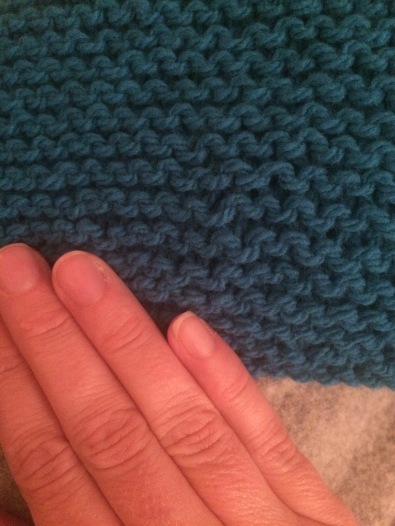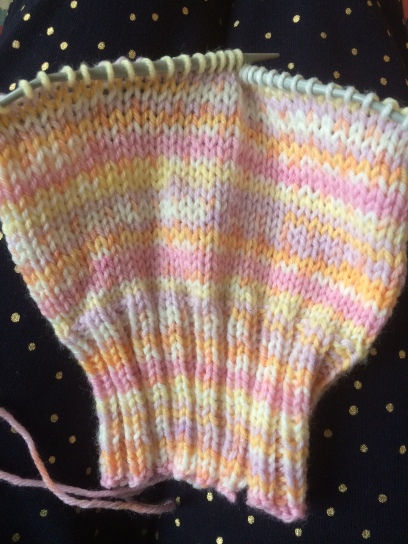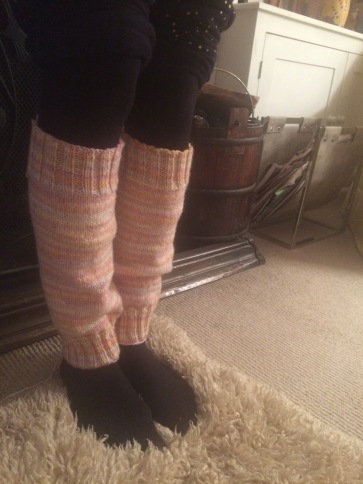As a freelance journalist, I work from home most of the time. This has its benefits – for a start, being able to do every school run with my six-year-old daughter, and take her to after-school clubs. One downside, particularly in a draughty Victorian house like ours, is that, in winter, it gets really cold during the day. The thermostat is set at 16C and I’m reluctant to turn it up, because if I give in to the cold it will cost money. So I put on extra layers, and a blanket on the really cold days. But my love of knitting has opened up a whole new world of woollen accessories, and my new defence against the cold is this pair of leg warmers. I followed a pattern on http://www.ravelry.com, a rabbit hole of a website which I love falling down.

First, a word about circular needles. When I started knitting, I used the traditional two needle method and learnt that knitting every row produces garter stitch (raised waves), while knitting and purling alternate rows produces stocking stitch (smooth v-shaped stitches). With circular needles, also known as working in the round, the opposite is the case.

Using two needles means you work the right side to the end, switch the project around and then work the wrong side. Here, stocking stitch is produced by knitting on the right side, then purling on the wrong side. With a circular needle you are always working the right side, because you never turn the project, you just keep going. So to produce a stocking stitch you simply work continuous knit stitches.

Garter stitch on two needles is produced by a knit stitch on both right and wrong sides (the raised wave effect is created because that’s what the back of a knit stitch, knitted on the wrong side, looks like from the right side). With a circular needle, because you are only ever working the right side, the waves of the garter stitch are produced by knitting one round, then purling the next (using a stitch-marker to remind you where you started). In a sense, stocking stitch is easier on circular needles because you just keep going.

So, back to the leg warmers. The yarn I used was 2 x 50g balls of Cygnet Fairy Isle DK Print, which has a lovely patterned effect, in yellow, pink and orange colours. The needles I used were circular, sizes 3.5mm and 4.25mm, both 40cm in length (don’t use 80cm length as the leg warmer would never stretch all the way around). After casting on, join the circle by continuing to knit, rather than turning the needle around. Be careful not to twist the stitches before you join your circle, as you will have to unpick the lot and start again (as I did on another project on a circular needle).

Following the pattern, I started with a k2, p2 rib for the bottom of the leg warmer and then a longer section of stocking stitch, finishing with another rib at the top. Repeat for a second leg warmer.

This was a very simple pattern to follow, and the whole project took about eight hours. As I finished the leg warmers, the temperature in London dropped to -2C so I put them on straight away and curled up on the sofa. I may even have turned the thermostat up to 17C.

The full pattern for leg warmers is available for free here: http://www.ravelry.com/patterns/library/easy-peasy-leg-warmers – and as the name suggests, they really are easy peasy to make. I remember leg warmers the first time around in the early 1980s, but a few years ago they came back into fashion. I think they are overdue a third coming, perhaps on my school run.

A good job you made of them to
LikeLike